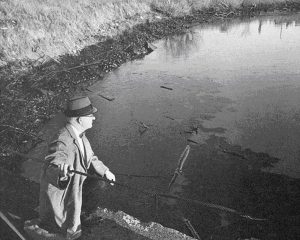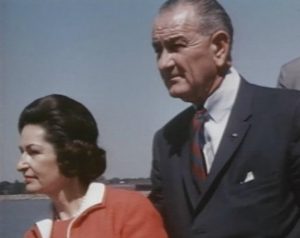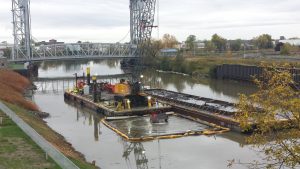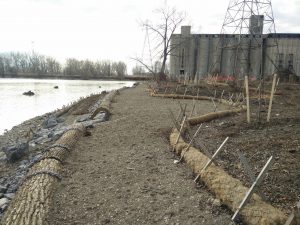
From Burning River to Catalyst for Economic Revival – The Buffalo River Story
Buffalo, New York — like Detroit and Cleveland — was a leader in the 19th century’s Industrial Revolution and made the Buffalo River its backdoor.
The Buffalo River was viewed as a working river that supported industry and commerce, and water pollution then was viewed as just part of the cost of doing business. At that time, people cared most about jobs and providing for their families, with little concern for the environment and its pollution.
There is, perhaps, no more poignant example of this societal indifference to water pollution than when the Buffalo River caught on fire 50 years ago after sparks from a workman’s torch ignited oil floating on the river under the South Park Lift Bridge in Buffalo.
However, today a river revival is underway that is catalyzing development of the riverfront as a new community front door with surprising economic benefits.
Buffalo and its Buffalo River have been well known as the terminus of the Erie Canal, the grain storage capital of the world, and, at one time, the 4th largest port in the world, earning it the name “Queen City of the Lakes.” After the canal was completed in 1825, railroads followed, and Buffalo attracted many industries including automotive, steel, chemical and oil. However, with no substantial pollution controls, the Buffalo River soon became overwhelmed with industrial and municipal effluents like many Great Lakes sites.
This water pollution was so bad that in 1968 the Federal Water Pollution Control Administration described the Buffalo River as “a repulsive holding basin for industrial and municipal wastes” that was devoid of oxygen and almost sterile. It was not at all surprising that that same year – 1968 – the Buffalo River caught on fire because of indiscriminate oil pollution.

Stanley Spisiak overlooking oil pollution of the Buffalo River, one month before the Buffalo River fire, Photo by Buffalo State College Courier- Express Collection via John Hartig
Public outcry over this water pollution, led by a Buffalo jeweler and conservationist named Stanley Spisiak, helped raise awareness and put pressure on governments and industries to stop it.
Spisiak was born in 1916, the 15th of 16 children born to Polish immigrants, and orphaned by the time he was 16 years old. He credits one of his teachers in Folsomdale, New York – Mary Coyle – with mentoring him about conservation and inspiring him to become an advocate for the environment.
Spisiak graduated from Burgard Vocational High School and then took business courses at Millard Fillmore College at State University of New York. After completing a class in mineralogy and gaining some experience at the Buffalo Museum of Science, his interest grew in caring for his Buffalo River and Lake Erie. But during the 1950s and early 1960s there were no strong environmental watchdog groups. Few people were concerned about the environment, and even fewer people were outspoken advocates for the environment and conservation.
For over 50 years, Spisiak filled that role and was known as “Mr. Buffalo River.” His environmental activism is credited with attracting President Lyndon Johnson to witness the pollution of the Buffalo River on August 25, 1966. Spisiak got President Johnson aboard the U.S. Coast Guard cutter Ojibwa, along with First Lady “Lady Bird” Johnson, New York Governor Nelson Rockefeller, and other key leaders, to see first-hand the pollution of Buffalo River sediments that was hauled aboard in a galvanized pail.

President Johnson and Lady Bird Johnson, Buffalo visit August 1966, Photo by LBJ Presidential Library
It was on this river tour Mrs. Johnson described the Buffalo River sediment as a “bucket of slop.” Spisiak showed how this “bucket of slop” represented the type of material that was annually dredged from the Buffalo River and disposed in the open waters of Lake Erie. After that visit, President Johnson was so moved that when he went back to Washington, D.C., he signed an Presidential Executive Order banning the open-water disposal of polluted sediments in Lake Erie.
Later in 1966, Spisiak orchestrated another Buffalo River boat tour for U.S. Sen. Robert Kennedy and Congressman Richard McCarthy, highlighting again the gross water pollution of the Buffalo River. On that river tour, Senator Kennedy stated that “This is as bad as anything I have seen.”
Through his advocacy work, Spisiak went on to serve as chairman of the Water Resources Committee of the New York State Conservation Council and received a presidential “Water Saver of the Nation” award and the “Water Conservationist of the Year” award in 1966 from the National Wildlife Foundation. His grassroots advocacy, along with others across the nation, led to an environmental awakening that catapulted across the country and eventually led to the establishment of Earth Day in 1970, the Clean Water Act in 1972, the U.S.-Canada Great Lakes Water Quality Agreement in 1972, and the Endangered Species Act in 1973.

Contaminated sediment remediation in the Buffalo River, Buffalo, New York , Photo by Buffalo Niagara Waterkeeper via John Hartig
Then in 1985, the International Joint Commission identified the Buffalo River as one of 42 Great Lakes Areas of Concern, or pollution hot spots, because cleanup had stalled, and the state and federal governments committed to developing and implementing a remedial action plan (RAP) to restore all impaired beneficial uses. Planning, filling knowledge gaps, evaluating remedial options and selecting remedial actions dominated the next almost two decades.
With dissatisfaction in progress, the Buffalo Niagara Waterkeeper was selected as the first nonprofit organization in the Great Lakes to re-energize the planning process, coordinate implementation, and catalyze further progress. Interestingly, Senator Kennedy’s son Robert F. Kennedy, Jr. went on to found the Waterkeeper Alliance that now includes the Buffalo Niagara Waterkeeper.
Today, Jill Spisiak Jedlicka, the grandniece of Stanley Spisiak, serves as the executive director and Waterkeeper of the Buffalo Niagara Waterkeeper — the leading force in continuing the restoration and stewardship of the Buffalo River.

Shoreline habitat restoration along the Buffalo River, Photo by Buffalo Niagara Waterkeeper via John Hartig
Implementation of the Buffalo River RAP and others throughout the U.S. portion of the Great Lakes then took a major step forward with the passage of the Great Lakes Legacy Act in 2002 and the Great Lakes Restoration Initiative in 2010. These federal funding authorities provided financial tools for local communities to finally realize remediation and restoration.
Considerable cleanup of the Buffalo River has occurred since 2012 through a coalition put together by the Buffalo Niagara Waterkeeper, including remediating over 660,000 m3 of contaminated sediment at a cost of $56.5 million and restoring nearly two miles of shoreline and 20 acres of habitat as a cost of $25 million. This contaminated sediment remediation and habitat restoration, along with controlling industrial and municipal pollution, has led to surprising ecological revival.
In 1968 when the Buffalo River caught on fire there were no fish in the lower river. Today, you can find 25-30 species of fish, a substantially improved invertebrate community living in the river sediments, and peregrine falcons are reproducing after an over 30-year absence.

Buffalo River restoration has been a catalyst for creating waterfront public spaces in Buffalo, Photo by Joe Cascio via John Hartig
With the cleanup of the Buffalo River, the City of Buffalo, the Buffalo Niagara Waterkeeper, and many partners began improving public access to the river. Indeed, hundreds of thousands of people now come to the riverfront that was once dead zone of activity. A cleaner Buffalo River and improved public access are now catalyzing economic revitalization of the riverfront. For example, a recent economic benefits’ case study, prepared by the International Association for Great Lakes Research, found that between 2012 and 2018 there has been over $428 million of waterfront development along the Buffalo River alone.
Federal funding from the Great Lakes Restoration Initiative and Great Lakes Legacy Act has clearly accelerated river cleanup in recent years that has led to improved public access to the Buffalo River and now waterfront revitalization. In the above case study, Buffalo Mayor Byron W. Brown puts this into perspective:
The Buffalo River has gone from a severely damaged waterway to one of our City’s greatest assets, with more than $400 million in investment since 2012. The healthy, rediscovered Buffalo River is now attracting residential, entertainment and recreational development, and its waters are an increasingly popular destination for kayaking, rowing, and fishing, while cyclists, runners, walkers, and birders, are drawn to its shoreline. The Buffalo River is now an economic engine, which hand-in-hand with our reimagined waterfront, is playing a critical role in Buffalo’s rebirth as the Queen City of the Great Lakes.
Buffalo Mayor Byron W. Brown
There is no doubt that if Stanley Spisiak were here today, he would be so pleased with the revival of the Buffalo River and grateful for how his grandniece is working with partners to ensure stewardship of his beloved Buffalo River.
Featured Image: Combat ship USS Freedom (LCS 1) sails into the Buffalo River toward Buffalo Naval Park, Photo by photo by U.S. Navy Mass Communication 3rd Class Specialist Kenneth R. Hendrix




